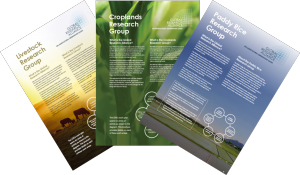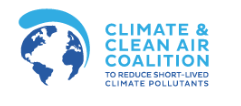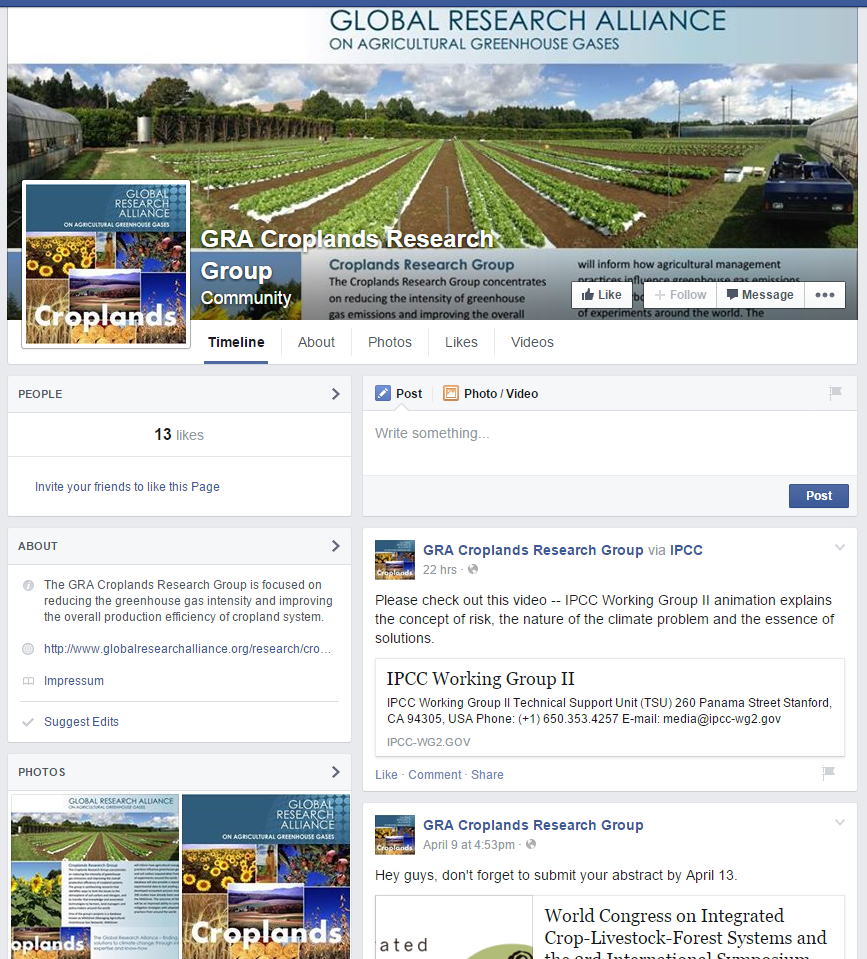Researchers show how improved greenhouse gas inventories for the livestock sector meet international requirements, support climate change and productivity goals and help broaden countries’ policy options.
For media interviews and enquiries please contact:
Andy Reisinger / +64 21 613 125 / [email protected]
Julianna White / +1.802.777.7017 / [email protected]
WELLINGTON, NEW ZEALAND // BURLINGTON, USA (23 August 2016) – Scientists say that using advanced greenhouse gas inventory and accounting methods to monitor, verify and report on emissions will be necessary for livestock to demonstrate that it is contributing effectively to the ambitious goals of the Paris Agreement on climate change.
Scientists from the Livestock Research Group of the Global Research Alliance on Agricultural Greenhouse Gases (GRA) and the CGIAR Research Program on Climate Change, Agriculture and Food Security (CCAFS) argue in a newly released brochure that more accurate and robust information on greenhouse emissions and productivity from livestock, captured through an advanced inventory system, will be essential if the sector is to contribute effectively to climate and development outcomes.
“61 nations included mitigation in the livestock sector in their Intended Nationally Determined Contributions submitted to the United Nations Framework Convention on Climate Change in 2015,” Lini Wollenberg, leader of the CCAFS Low Emissions Development research program based at the University of Vermont’s Gund Institute for Ecological Economics, said. “They need advanced greenhouse gas inventories to report on changes in emissions and the reductions in emissions intensity that result from more productive and efficient livestock systems.”
Simple inventory methods (called Tier 1) use livestock numbers multiplied by a constant emission factor per animal, meaning that the only way to reduce emissions from livestock is to reduce animal numbers – not plausible for countries concerned with food security and rural development. Researchers point out that livestock development and climate change outcomes can support each other: more productive and efficient farm systems generally produce food at much lower greenhouse gas emissions per unit of product.
The brochure draws on a global analysis demonstrating that doubling the milk production of low-yielding dairy systems, from 1,500 to 3,000 litres per cow per year, could roughly halve the greenhouse gas emissions per litre of milk from those systems. However, if a country’s livestock greenhouse gas inventory does not use advanced methods (called Tier 2), then the impact of such productivity gains is missed.
Advanced inventories allow countries to understand the impact of different productivity measures on emissions. For example, reductions in emissions intensity may be achieved through (see e.g. here and here):
- Improved digestibility of feeds
- Increased pregnancy rates for mature breeding cows
- Increased weight gains in finishing animals.
Such productivity measures may support rural economic development, form the basis of a climate change mitigation plan to be submitted to the UNFCCC, or help qualify a country for climate finance.
Uruguay, for example, used its advanced greenhouse gas inventory in the livestock sector to commit to reducing emissions intensity in livestock (i.e. emissions per kg of meat) by 31-46% by 2030 from base year 1990. The inventory also allows Uruguay to incorporate outcomes from productivity improvements into its domestic policies and use them to demonstrate progress towards its INDC.
“Many countries know that a Tier 2 inventory would be incredibly helpful for them, but they are deterred by the perceived complexity and the resources required. An inventory based on Tier 2 methods is by its nature more detailed than the simple Tier 1 methods that most countries start out with, but it does not have to be much more complicated,” explained Harry Clark, Co-chair of the GRA’s Livestock Research Group and Director of the New Zealand Agricultural Greenhouse Gas Research Centre.
“Countries need guidance and support on how to set up an inventory that is credible and defensible but does not place unrealistic demands on their data sources,” Clark said.

“Livestock development and climate change: The benefits of advanced greenhouse gas inventories” was first published by the Global Research Alliance on Agricultural Greenhouse Gases and the CGIAR Research Program on Climate Change, Agriculture and Food Security on 23 August 2016. It is available online at: http://hdl.handle.net/10568/76520
Further reading:
Livestock Research Group of the Global Research Alliance on Agricultural Greenhouse Gases (GRA): www.globalresearchalliance.org/research/livestock
Emissions data, greenhouse gas emissions measurement methods, and tools, for agriculture: www.samples.ccafs.cgiar.org
Low emissions development in agriculture: quantification, decision-making and implementation: https://ccafs.cgiar.org/themes/low-emissions-agriculture
The Global Research Alliance on Agricultural Greenhouse Gases brings countries together to find ways to grow more food without growing greenhouse gas emissions. Its Livestock Research Group (LRG) is focused on reducing the emissions intensity of livestock production systems and increasing the quantity of carbon stored in soils supporting those systems. The LRG works with scientists, farmers and farm advisors, industry and policy makers to research mitigation options, share knowledge and experiences and help strengthen the resilience of livestock farming.
The CGIAR Research Program on Climate Change, Agriculture and Food Security (CCAFS) brings together the world’s best researchers in agricultural science, development research, climate science and Earth System science, to identify and address the most important interactions, synergies and trade-offs between climate change, agriculture and food security. The University of Vermont hosts research focusing on low emissions agriculture. Research is carried out with support from CGIAR Fund Donors and through bilateral funding agreements. For details please visit https://ccafs.cgiar.org/donors.
The New Zealand Agricultural Greenhouse Gas Research Centre (NZAGRC) coordinates research and development into agricultural greenhouse gas mitigation solutions in New Zealand. The NZAGRC’s focus is to provide knowledge, technologies and practices that grow agriculture’s ability to create wealth for New Zealand in a carbon-constrained world. The NZAGRC works in partnership with nine New Zealand organisations to deliver practical on-farm solutions to mitigate methane, nitrous oxide and increase understanding and stability of soil carbon stocks.
Our recently formed Integrative Research Group (IRG) now has its own web page: http://globalresearchalliance.org/research/integrative/
The IRG was agreed at the GRA Council meeting in September 2015 as a merger of the previous Soil Carbon Nitrogen Cycling Group and Inventories & Monitoring Groups. The IRG met for the first time at the Livestock Research Group Meeting in February 2016.
Visit the page for IRG information, including leadership, participating countries, and group activities.
The Global Research Alliance on Agricultural Greenhouse Gases is delighted to announce our new Special Representative, Hayden Montgomery. This is the first time the Alliance has appointed such a role, which will help us in our work with international and regional organisations, NGOs and the agricultural sector globally.
More specifically, the two-year pilot role will involve:
- Lifting the Alliance’s profile at relevant international meetings and within Member countries
- Broadening links with NGOs, potential partners, the agricultural sector and philanthropic organisations
- Helping secure funding for research projects
- Promoting the Alliance to potential Member countries
Hayden will be known to some Members as the person responsible for setting up the LEARN Network, in some ways a precursor to the Alliance; and as part of the team that initially helped establish the Alliance, including the Secretariat.
We are very pleased to welcome Hayden in his new role.
Read the New Zealand Ministers’ Release

Three Research Groups of the GRA, Croplands, Livestock and Paddy Rice, have each produced an easy-to-read overview of their group activities and structure.
Each of the brochures cover the six areas of work that the GRA focuses on: understanding the current research landscape, building capability, good practice guidance and methodologies, research networks and databases, collaborative research, and policy support & links to international initiatives.
- 2016 PRRG Brochure
- 2016 CRG Brochure
- 2017 LRG Brochure (updated March 2017)

More information on each of the Research Groups can be found on the GRA website.
The Climate & Clean Air Coalition (CCAC) Agriculture Initiative has released a report on the current challenges of livestock methane emissions management, and offers actionable solutions. The report follows on from a study of 34 countries across Asia, Africa and Latin America, and an in-depth assessment of six of these countries. It identifies and addresses four main problems: lack of awareness, lack of knowledge, low access to incentives, and ineffective policies/legislation. See here for the media release, or read the report.
Five animal-safe compounds have been identified as being able to reduce methane emissions in livestock by up to 90%. The discovery was made after more than 100,000 compounds were tested by researchers working through the New Zealand Agricultural Greenhouse Gas Research Centre and Pastoral Greenhouse Gas Research Consortium. Further trials are needed, but the search is already under way for a commercial partner to translate the findings a usable product.
The finding is part of the research made possible through New Zealand’s increased government and farmer funding into agricultural greenhouse gas mitigation. Collaboration on the project with international scientists has been made possible through New Zealand Government funding of the Global Research Alliance. Read the NZAGRC media release and related news release.
The Global Research Alliance Croplands Research Group is now up and running on Facebook. This move to social media enables the group to post updates, news, and meeting and upcoming event information in a user-friendly, visually driven format. It’s never been easier for interested or new researchers in croplands greenhouse gas emissions research to keep in the loop. Visit and like their page at https://www.facebook.com/GRAcroplands
New discoveries on the greenhouse gas methane produced in the rumen of ruminant animals have been made through research funded by the New Zealand government to support the GRA. The research is part of the Global Rumen Census, the Hungate 1000 and the Identification of low methane emitting phenotypes research projects. NZ AgResearch has identified and classified methanogens in the rumen of New Zealand ruminant animals, to help pinpoint targets and develop strategies for reducing agricultural methane emissions. Findings to date show a limited diversity of methanogens, and in low-emitting rumens, a smaller physical size and additional strains of bacteria, some of which do not produce hydrogen. Another type of low-emitting rumen has been discovered and is still being examined. The findings represent an important step towards the goal of breeding low methane-emitting sheep which also maintain reproductivity and meat and wool production.
The Alliance is proud to release our new brochure on who we are and what we do! Download it here
The GRA is now active on Twitter! For live updates on GRA news and events follow @GRA_GHG or click here.



